Diagnosed at 3 Weeks
Taelley
Story Written by Mother
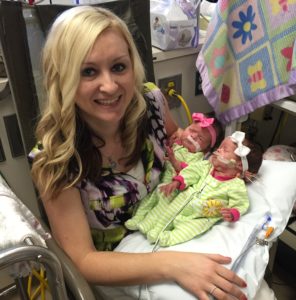
First Mother’s Day
My identical twin girls Taelley and Pelley were born at 26 weeks 6 days. Too early! Taelley suffered a pulmonary hemorrhage the day after birth requiring two blood transfusions. The girls then did well and stabilized on a bubble CPAP in the NICU.
Three weeks after birth the girls had a routine preemie head ultrasound. That’s when our lives changed forever. My phone rang early that morning with the NICU number showing. I was getting ready to leave for the NICU for the day. I still remember the physician didn’t even know how to tell me the news and he was shocked that Taelley had no signs or symptoms. She had a grade 4 bleed in the left ventricle and a grade 3 on the right. He told me she may never walk, talk, function properly for her age and she might end up with cerebral palsy. My husband and I fell apart and couldn’t believe this was happening.
She received a VP shunt a week later when she reached 4 pounds. Again, she never had head growth, eating problems, vomiting or any signs or symptoms so nothing prepared us for the journey we were about to begin. A month after her shunt was placed we were still in the NICU but she was doing well off oxygen and getting nearer to coming home. Two days before mother’s day when I walked in I noticed her head looked enlarged and misshaped. The nurse told me she noticed it to and her measurements were up. She had already notified the NICU physician. Neurosurgery was called in, but the PA brushed it off and told the nurse “I am a mom that just worries too much”. I involved my social worker at that point and insisted ordering a stat MRI for Taelley. She went to emergency surgery that afternoon. The left ventricle was so enlarged that it was pushing over onto the right. The MRI looked horrifying. The neurosurgeon said the left side was not communicating with the right and he put a whole through her septum so the left would drain to the right were the shunt was placed. She did well after surgery and was discharged from the NICU 2 weeks later.
On her out patient follow up MRI she had a new diagnosis of Chriari malformation that our local neurosurgeon failed to tell us about. We decided to find a new neurosurgeon at Stanford due to the lack of detail and care with her current surgeon. The new neurosurgeon at Stanford was amazing and well worth the 2.5 hour drive. He ordered another MRI in February 2016 and explained everything in great detail. He also gave us the bad news that her left side was not communicating with the right again and would need a revision within a week. We came back home packed a few bags and headed back for her surgery. Again, she had not showed any signs or symptoms. This revision went well and we were able to go return home 3 days later. Soon afterwards we had another surprise, I learned I was pregnant with our third child!
When I was 7 months pregnant Taelley’s vein on the side of her head became more pronounced and she was fussier than usual. I immediately called her neurosurgeon, he had us come in back to Stanford for a repeat MRI. Every time they walked in the room to talk to us about the MRI results I knew when it was bad news. Sure enough the MRI showed the left ventricle was slightly increase. He changed the programing on her shunt to drain at a faster rate. She had another MRI the next afternoon and it showed things were stable. One week before I was scheduled to deliver our third child she had one more MRI it showed everything was stable. Not worse and not better. At this point it was a band aid. Three weeks after we welcomed our third daughter to the world Taelley had a follow up MRI. When our neurosurgeon met with us I again braced for bad news.
The left ventricle had increased more and she required surgery the following week. He put in another reservoir that went directly into the left ventricle and connected to the shunt itself. She never was herself after this surgery. Usually she bounced right back after shunt revision surgeries. A week after surgery she started having fevers, but she had a runny nose so her pediatrician thought she had a viral cold. After a week of fevers I notified her neurosurgeon who advised that I take her to urgent care to rule out or confirm a cold, flu etc. Urgent care told us it was a viral infection that would slowly resolve. I knew something more was going on. A two year old shouldn’t have a fever for 6 days.
The next day was Sunday and my husband and I noticed that she was pale and her stomach was descended. We kept telling ourselves we will get her into her pediatrician first thing Monday morning. That night she began crying and seemed like she was in pain. I decided to take her to the local ER. A few hours later our lives would change again forever. Taelley and I were on an ambulance to Stanford. My husband, mom and two other daughters following behind us. Her neurosurgeon was waiting in her room for us to arrive.
The first thing he said, “You didn’t tell me about her stomach and that when he got the call from the ER he said “No, not Taelley”. She had a stomach ultrasound at 5am immediately after our arrival. An hour later we were taking her to surgery. She had a golf ball size cyst at the end of her catheter above her stomach. During this initial surgery the stomach catheter was removed and she had an exterior drain into a bag on the side of her bed. The next day her she received an external drain EVD and was now in the PICU. She had a typical shunt infection, Staph meningitis. This was the end for us.
A week later, the day before the shunt was going to be replaced and we would be able to return home the entire neurosurgery team, infectious disease, PICU team, and our social worker came in. We knew this was not going to be good news. We received the devastating news that she CSF tested positive two days now for an extremely rare infection/bacteria Mycobacterium abscesses of the brain. She is the second reported case in children in the nation with this infection and there were only 19 adult cases reported. A definitive treatment was unconfirmed and would be difficult and timely. Then we were told she could be in the ICU for 6 months to a year. If this wasn’t bad enough she would require surgery every 10 days to move the EVD. The day after Thanksgiving the team came in to tell us it had been 3 weeks of negative cultures and they would internalize the shunt in 2 days. We held our breath until that day came and went. She did amazing after her shunt was replaced. She received a VA shunt this time which has its pros and cons, but all we knew is it was back in and we could possibly go home soon.
All of the various teams of physicians were shocked how fast she cleared the infection and she came home on November 28, 2016. She came home with a PICC line. I ran her IV antibiotics every 6 hours and one every 24 hours. She also had one oral antibiotics. She also came home on a NG feeding because she lost the desire to eat while in the PICU. Fortunately the night we got home she wanted to eat baby food again! The NG tube came out 4 days later. Our life was still upside down, but we had our little girl home and our family back together. We were able to spend Christmas at home with our family! There were some hiccups here and there, but she pulled her PICC line out for the second time March 2, 2016 and the physicians decided she had been on treatment long enough. For her second birthday she was able to act like a toddler without being connected to IV’s.
In May 2016 I discovered a bump on her old incision site that looked infected. I contacted her ID team and neurosurgery team and started packing. We drove down, arriving in the Stanford ER the next morning as instructed by the teams. She had surgery that night to remove the bump and cultures were obtained. She didn’t seem to act like herself after surgery. She appeared dazed when she usually bounces right back after surgeries. They kept her one more night thinking she was still just recovering from the surgery. She also had had an MRI that was stable when we initially came in for the bump. She was discharged on a Saturday at noon.
I headed back to my grandmother’s home to pack up the car and all three children to head home. As we were walking out the door to leave Taelley became very lethargic and started vomiting. We brought everyone back inside and cleaned up Taelley. She started vomiting more and then began screaming and rolling around on the ground and then would fall asleep. She had never had these symptoms before, but I knew this had to be her shunt. I called 911 and paged neurosurgery to let them know we were on the way. Sure enough Taelley was in shunt failure. They did a shunt tap and discovered her pressure were very high and drained a lot of CSF to give her relief until surgery the next morning. She became very ill through the night.
The neurosurgeon checked on her every hour and she went to surgery first thing in the morning. During this time we were also informed the mycobacterium was back, but only showed up in the bump and not the CSF. Meaning she could go home on IV antibiotics and didn’t require an EVD and ICU stay. We were somewhat relieved because we could go home. In August the IV meds stopped and she is now on 2 oral antibiotics. She is also on blood thinners because they found blood clots at the end of her shunt catheter which had caused the block which put her in shunt failure in May. Our story can go on and on but through this all Taelley continues to meet her milestones. She can walk, talk, dress herself, brush her hair and teeth, does gymnastics, feeds herself and succeeds in everything she does. She has gone through so much, but amazes us every day. Taelley is my hero. She never can catch a break, but it never stops her or holds her back.
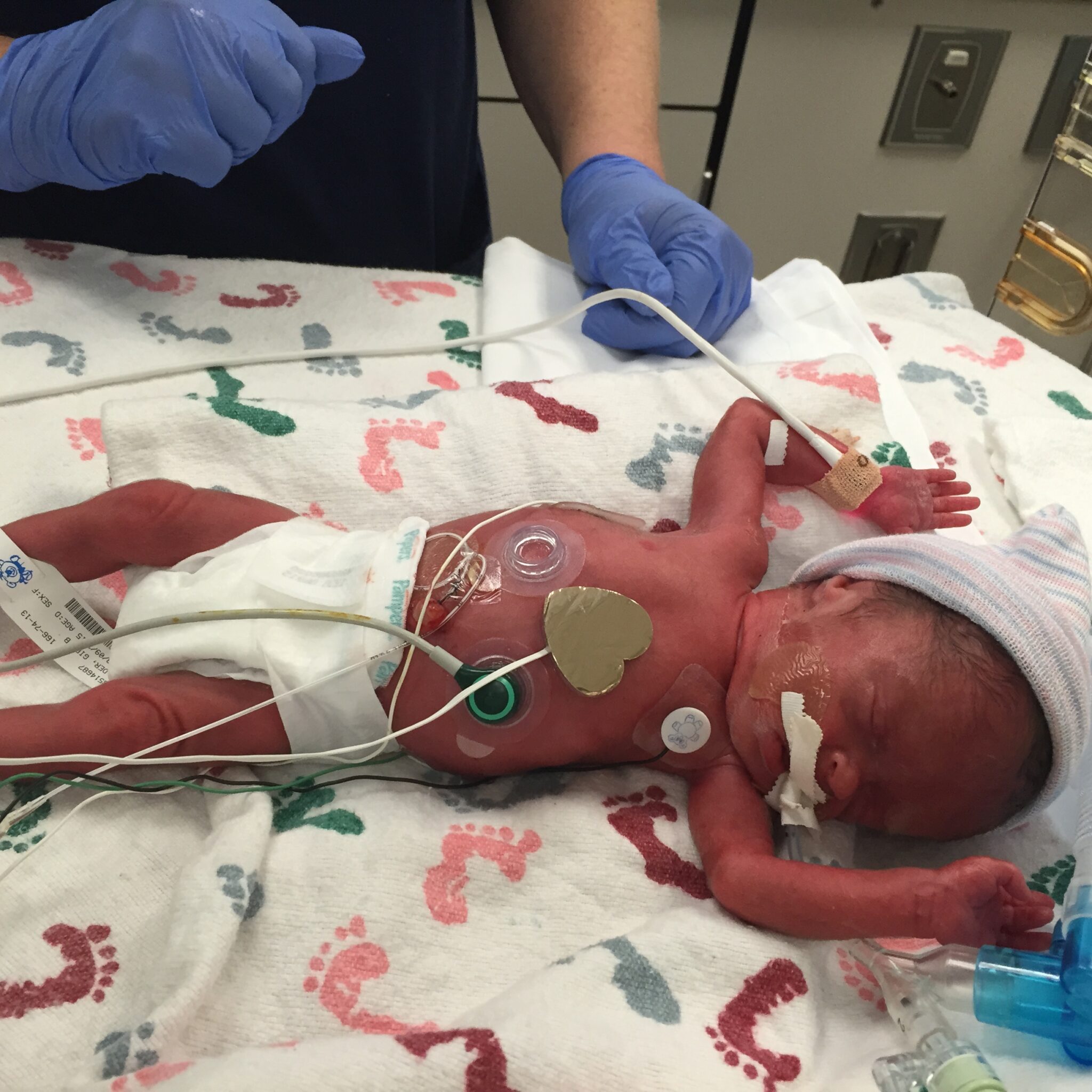

Taelley in the NICU right after delivery 3/9/15
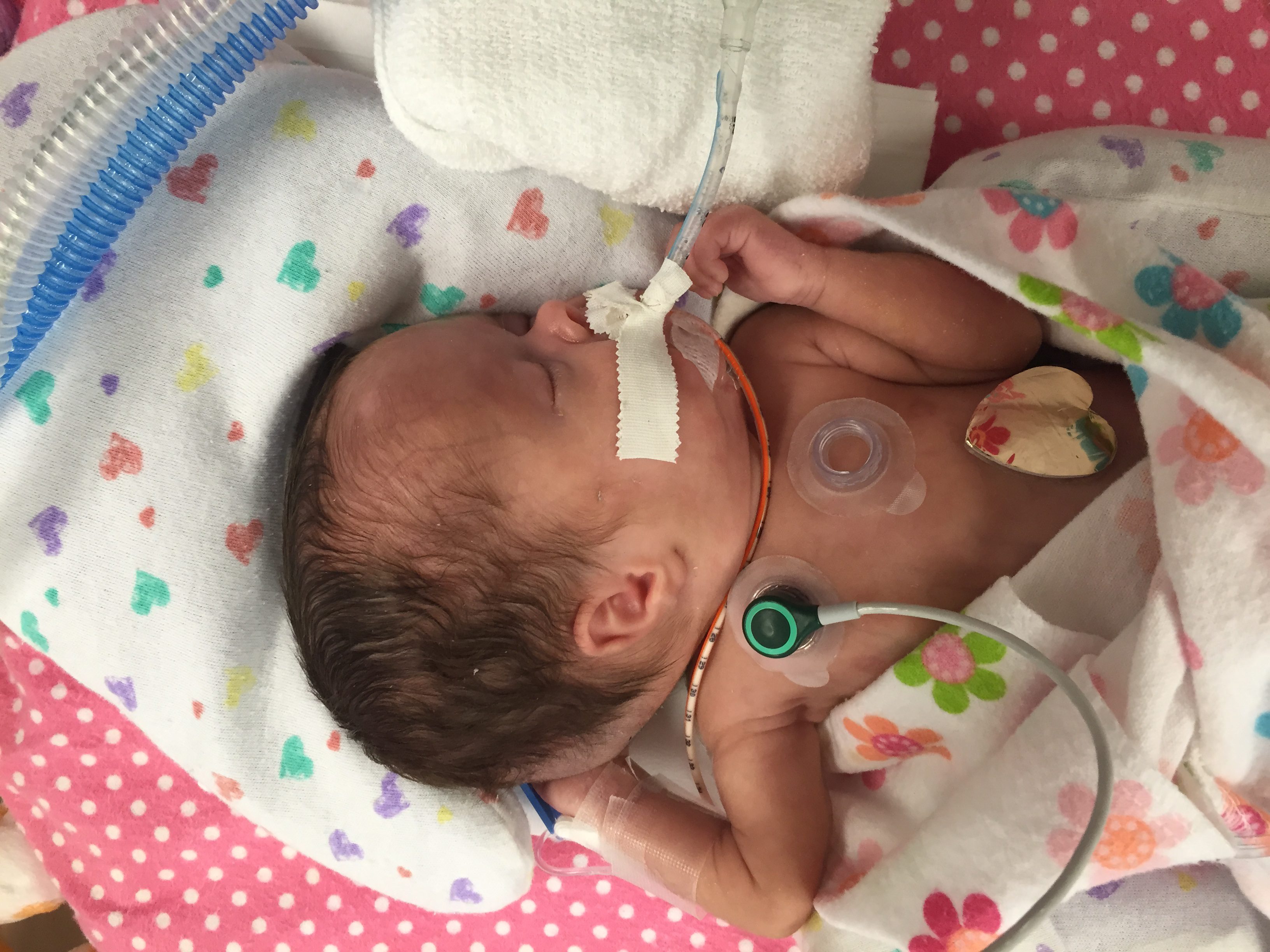

After her first shunt surgery (4lbs)
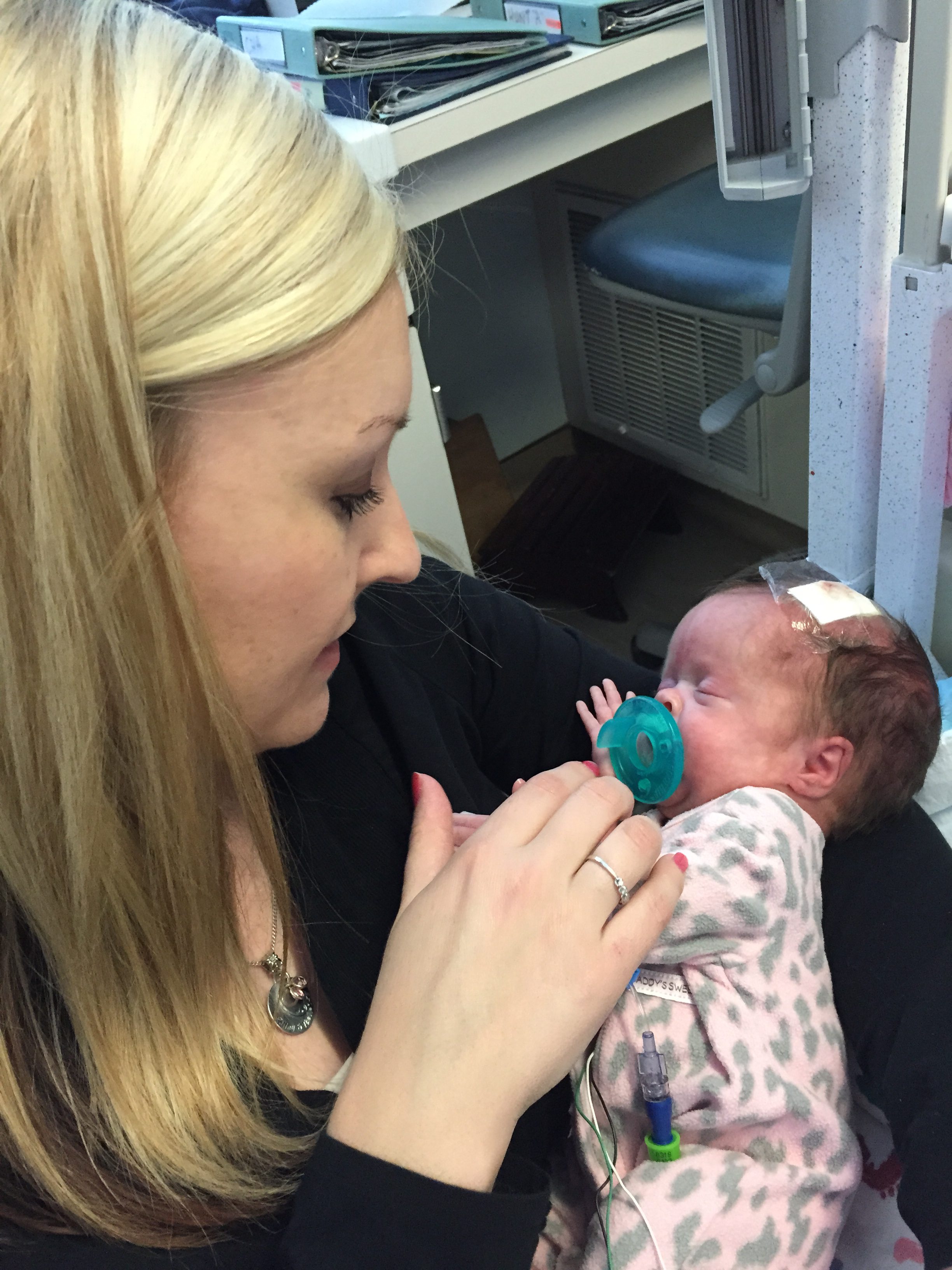

The day after her first revision
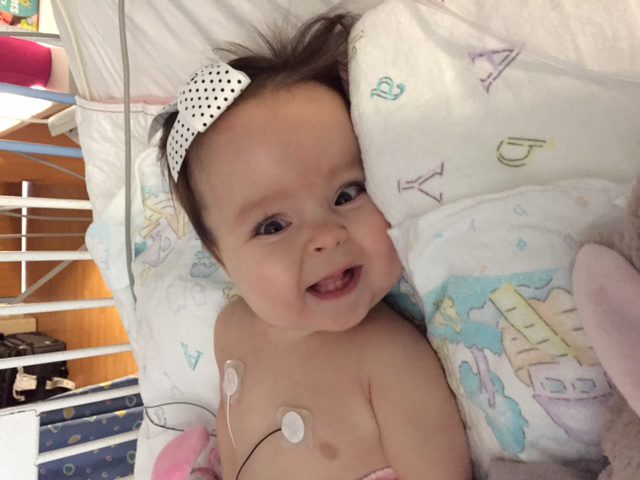

Hours after her third revision
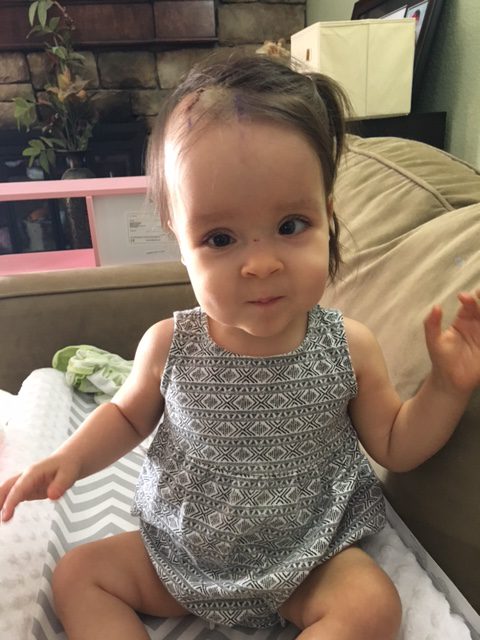

2 days after her fourth revision
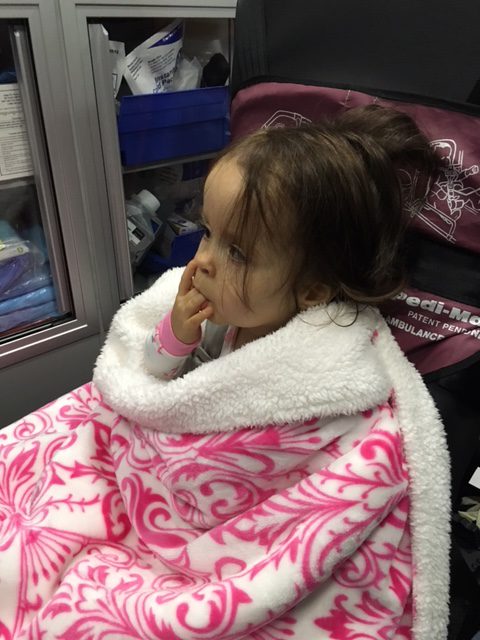

Ambulance ride to Stanford…the beginning of her 2 month stay in the PICU
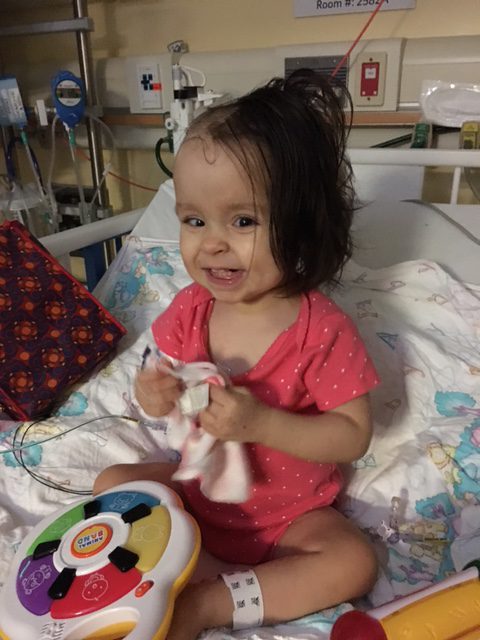

2 days after her first EVD
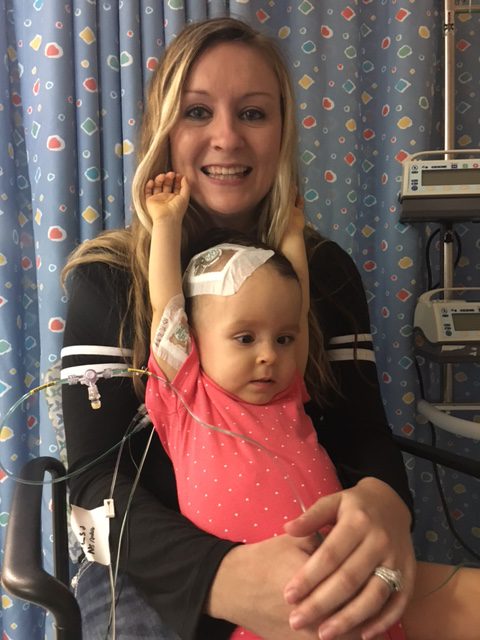

I finally got to hold her after a week of being in the PICU
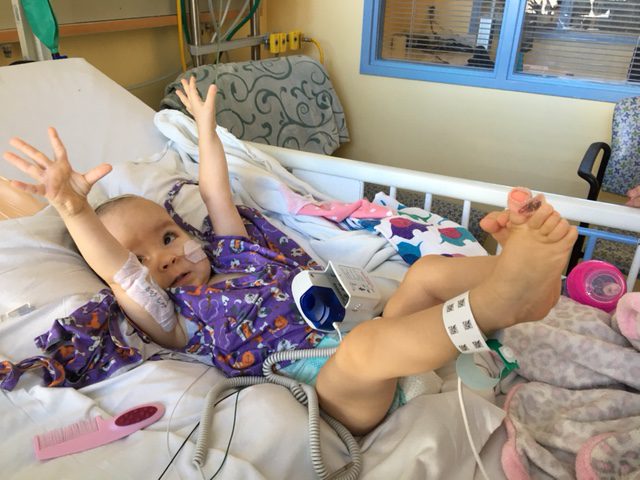

After 2 months of being in the PICU her shunt is back in
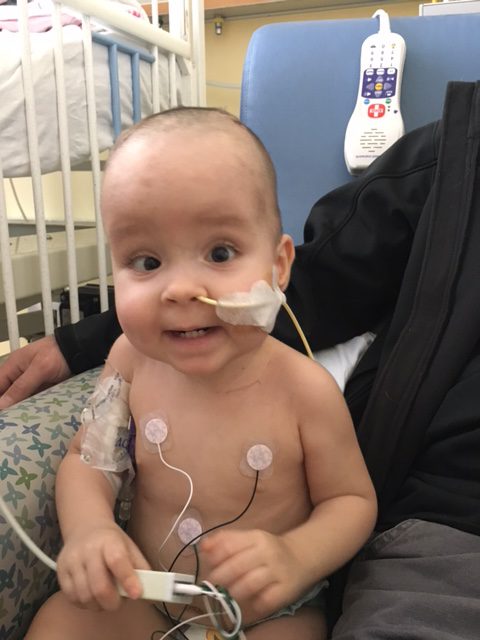

Going home the next day
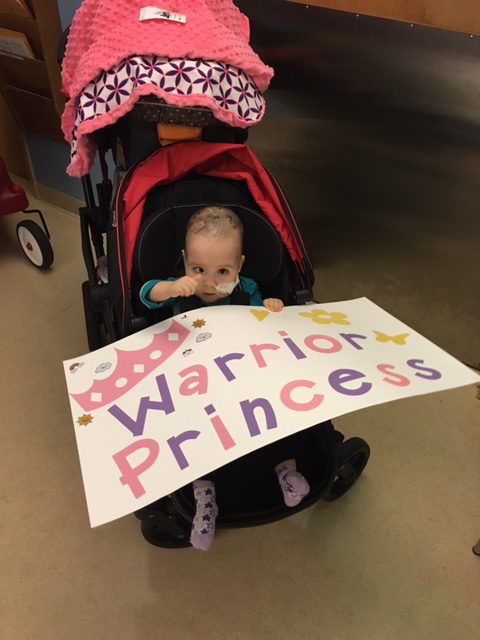

Leaving the PICU and heading home
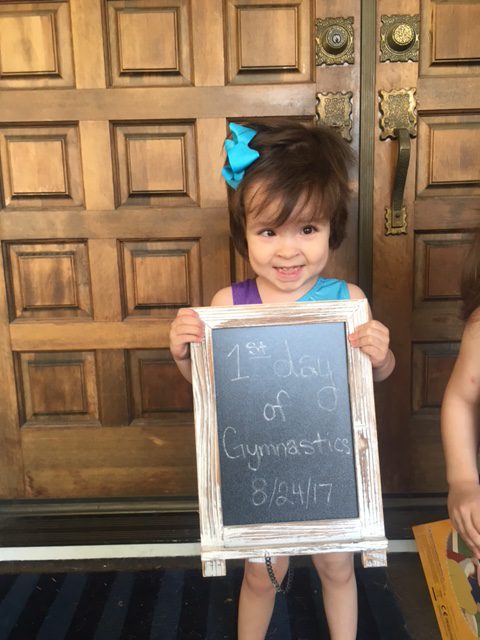

Taelley today heading to her first day of gymnastics
Tell us about your journey with hydrocephalus!
Share your story of hope and perseverance with us! We will feature the amazing individuals in our community who are living life to the fullest regardless of their condition! Stories are reviewed by our staff and posted on our website and through social media. Stories should be no more than 800 words long. Click here to submit your story today!
Let’s SHARE. Let’s CONNECT. Let’s raise AWARENESS! Let’s INSPIRE!
For questions, email: communications@hydroassoc.org with the subject line “Share Your Story”.
Become a Grassroots Advocate for Hydrocephalus today! Visit our Advocacy Action Center.
